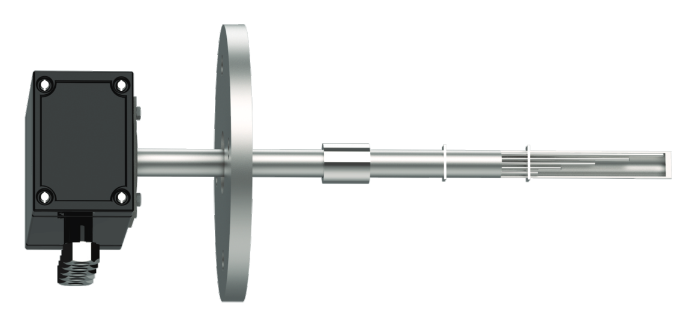Multi-point thermocouples are used to measure more than one temperature point through a single access point. The sensor has multiple temperatures input along the length of the sensor to calculate an accurate temperature profile. This sensor can be equipped with up to 60 points along the length with a single penetration point. These sensors are mostly used in chemical and petroleum industries for temperature profiling of reactors, crackers, and liquefied gas in tanks.
The design and dimensions of the multi-point thermocouples differ depending on the shape and size of the container, position of the sensors, service required, pressure, temperature and ambient environment of where the thermocouple has to be installed and where the output is required.

What are the features of Multi-point thermocouple?
- Multiple sensing points with only a single accessing point.
- Effectively measures temperature profile for various applications.
- The individual sensor can be replaced without affecting the whole.
- Cost-efficient as compare to placing individual sensors.
- Customizable design available according to different temperature range and signal accuracies.
- All sensors are fully metal sheathed with mineral insulation.
- Some designs are available with resistance elements as the primary sensor to provide more accurate results.
Application Areas
- Chemical and petrochemical industries
- Reactors and Distillation fractionators
- Fuel depots,hydrocrackers and hydrotreaters
- Fluid catalytic cracking unit
- Crude oil distillation
- Catalytic reforming process
Multi-Point Thermocouple Installation

Technical Specification
| Element | K, N, E, Pt100 |
| No. of sensors | Depending on desing (Up to 60 points) |
| Hot junction | Grounded, Ungrounded |
| Sheath material | SS 316, SS 310, Inconel 600 |
| Sheath diameter | 12.6, 10, 8, 6 etc. |
| Response Time | Less Than 10 sec. |
| Temperature Range | Depending on material |
| Process Connection | As per requirement |
Sensor Design
Tempsens Instruments provides endless type of design for multi-point thermocouples, depending on the requirements and application of the thermocouples. To illustrate the basic idea of different types of multi- point thermocouples, couples of design has been illustrated:

Freely Suspended Multi-Point thermocouple
Flexible Suspended sensors provide a flexible design with greater coverage for temperature measurement. The sensors are routed around the circumference of the reactors and then inwards to the required measuring point. The individual sensor can be routed according to the requirement of the applications. They can be coiled for shipment and can be supplied without an outer protection tube.

Multi-point thermowell with heat transfer block
In this design, the measuring sensor is integrated with heat transfer block to provide dual protection. The heat shrink block is welded with the vessel body where the measuring sensor has to be attached. The design allows for replacement and removal of the individual sensor during operation if required. The sensor rests against the heat transfer block in order to provide shorter response time.

Spring loaded multi-point thermocouple
The design is equipped with a bimetal spring-loaded device to an individual measuring sensor to provide positive contact between the measuring sensor and protection tube. The bimetallic spring is installed into the protection tube in the unloaded position, and the connection is achieved when the heat is applied during the process.

Multi-point thermocouple with a guiding tube
Guide tubes are provided for each sensor so that accurate positing of the sensor can be ensured. This design allows the thermocouple to be replaced without the need to perform any re-welding on the process tube. The design allows the welded part to be attached to the protection tube in the absence of the sensor. These guide tubes can be springloaded to make sure the sensor is in contact with the inner wall.

Multi-point thermocouple with Radial arrangement
The design allows individual sensors to arrange in radial pattern to fit any cylindrical chamfer across the inner surface. The design allows routing of the radial elements to have the lowest possible influence on the function of the catalyst. Shorter response time can be achieved which leads to fast information delivery about the change in the process.










